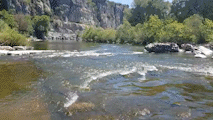Anti-war films may criticize armed conflicts in a general sense to illustrate that war is futile and a loss for all sides involved, while others focus on acts within a specific war, such as poison gas use or genocidal killing of civilians. There also are anti-war movies that use parody and black comedy to satirize wars and conflicts that do not necessarily take place on the battlefield. Additionally, non-fictional anti-war films aim to document the realities of war or historical events.



















